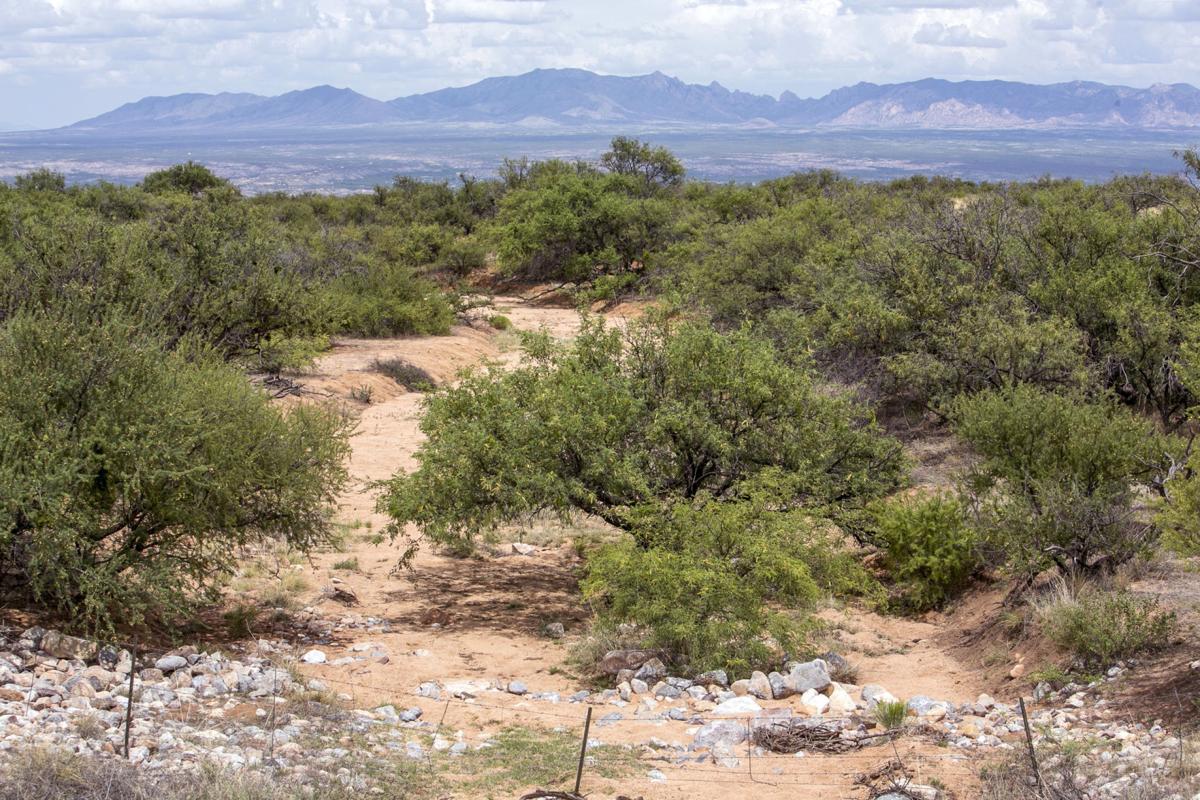The Benson City Council voted unanimously on Monday to approve the final plan for a 28,000-home development in the San Pedro Valley — even as a federal permit on which the project relies remains in question.
The master-planned community, Villages at Vigneto, would include retail and office space, parks, community trails, schools, medical facilities, vineyards and a golf course.
More than 50 people attended the public hearing on Monday, with some voicing passionate support or opposition to the project, which supporters say will boost Benson’s lagging economy.
“If you don’t grow, you die,” David DiPeso, a Benson real estate agent, said of the Vigneto plan.
Critics claimed the project’s master plan falls short on utilizing the latest in conservation techniques, such as rainwater harvesting and dark-sky-friendly lighting.
Environmentalists say the groundwater pumping for the massive development — which could bring 70,000 people to the small Cochise County town — could harm the federally protected San Pedro River and riparian area, which draws millions of birds and countless wildlife enthusiasts to the region.
The project still has dozens of city approvals ahead, such as site plans and plats, which must be dealt with before groundbreaking, said Benson city engineer Brad Hamilton. Construction should begin by next summer, said Mike Reinbold, spokesman for developer El Dorado Holdings.
At the meeting, former Benson Mayor Mark Fenn said that, despite critiques of the project’s potential environmental effects, it’s an important opportunity for Benson.
“I see myself as someone who is willing to take a risk with our town to invest heavily and bring economic growth,” he said.
Thorough groundwater studies are necessary before anyone can understand the project’s impact on the San Pedro riparian habitat and the species that live there, as well as water availability for residents, said Tricia Gerrodette, an environmental activist.
A defunded $1 million U.S. Geological Survey study, axed in 2010 amid budget cuts, would have explored how groundwater pumping could affect the San Pedro.
10-year-old water OK
The council’s approval comes before resolution of questions from environmentalists and the U.S. Fish and Wildlife Service about the validity of a 10-year-old Clean Water Act permit on which developer El Dorado is relying.
The U.S. Army Corps of Engineers issued the permit in 2006 to the developer of a smaller, canceled project for the same site: the 20,000-home, 8,000-acre Whetstone Ranch. The permit, transferred to El Dorado in 2014, covers 8,000 acres of the 12,000-acre Vigneto project.
Environmentalists say the new project’s larger footprint, and the discovery of two newly listed endangered species since 2006, mean the original permit should be reconsidered and the Corps should initiate required formal consultation about the project’s possible impacts.
Until that happens, any actions on Vigneto should be on hold, says Matt Clark, conservation policy analyst for the Tucson Audubon Society.
“We’ve expressed this concern early and often,” Clark said. “We believe approval of the community master plan is premature until these federal permitting processes and consultations have occurred and until the results of the studies and consultations have informed the scale, configuration and design of the proposed development.”
In May, six environmental groups — including the Tucson Audubon Society — filed a lawsuit in U.S. District Court, arguing the Army Corps and the wildlife service are required by Section 7 of the Endangered Species Act to hold formal consultations on how the project could affect federally protected species and their habitats.
The wildlife service also has been calling for that consultation since last year, when it sent a sent a draft letter to the Corps requesting it.
It appears some degree of consultation is on the horizon.
Jeff Humphrey, spokesman for the wildlife service, said Monday that the agency’s field staff and the Corps are planning a visit to the project site. The agencies will then determine the extent of consultation required, including whether to consider direct and indirect effects of the entire project on the surrounding environment and species dependent upon it, Humphrey said.
The Corps has already agreed to “informal consultation” on a 144-acre parcel on the San Pedro that will be devoted to mitigating effects of Vigneto’s intrusion on desert washes, Humphrey said. The Corps agreed only to “informal” consultation because the agency does not believe there will be impacts, and the wildlife service has 30 days to respond to that assessment, he said.
A Corps spokesman has not responded to questions about whether the project’s permit would remain valid if formal consultation is initiated.
Reinbold, of El Dorado, said outstanding questions about the permit have “nothing to do” with the vote on the Vigneto master plan.
“I believe they processed everything properly, according to federal law,” when the Corps issued the original 2006 permit, he said.





